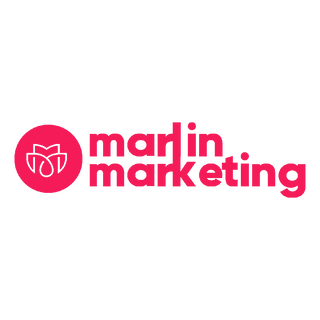AI-Powered Performance Marketing: Supercharging DTC Campaigns with Automation
Introduction
Direct-to-consumer (DTC) brands live and die by the efficiency of their digital marketing. In recent years, artificial intelligence (AI) has emerged as a transformative force in performance marketing, enabling DTC marketers to do more with data and less with guesswork. In fact, 70% of marketers expect AI to play a larger role in their work going forward1. From hyper-personalized targeting to real-time optimization, AI is not just another tool—it’s a secret weapon for scaling modern e-commerce brands2. In this post, we’ll explore how AI-driven automation is supercharging DTC campaigns, covering everything from smarter ad bidding and budget allocation to personalized creative and real-world case studies of brands boosting their return on ad spend (ROAS).
AI-Powered Optimization: Smarter Bidding, Placements & Budget Allocation
One of the biggest advantages AI brings to performance marketing is the power of automation and machine learning to optimize campaigns on the fly. Algorithms can adjust bids, ad placements, and budgets in real time based on performance data—something human teams could never do at scale. For example, if an ad is underperforming with a certain audience segment, an AI-powered system will automatically redirect spend toward better-performing audiences or channels, ensuring no advertising dollar goes to waste3.
AI’s predictive analytics also help allocate spend to the highest-yield opportunities. By analyzing historical campaign data, machine learning models can forecast which channels, times, or audience segments are likely to deliver the best results. These insights enable DTC brands to focus budgets where they’ll get the strongest return. For instance, an algorithm might increase bids during hours when conversions peak or shift budget into a new audience that it predicts will convert well. All of this translates into higher ROI and better performance with the same or even smaller budgets. Programmatic advertising platforms add another layer of efficiency by using AI to automate ad purchasing and placement in real time4.
Personalization at Scale: Hyper-Personalized Ads and Product Recommendations
In the era of AI, personalization in marketing has moved from a nice-to-have to a must-have. Consumers now expect ads and content tailored to their interests—and AI lets DTC brands deliver exactly that on a massive scale. Machine learning algorithms can analyze each customer’s browsing behavior, purchase history, and demographics to serve hyper-personalized ads. Gone are the days of one-size-fits-all campaigns; today, an AI system might show completely different ad creatives or product recommendations to two users based on their unique profiles. By tailoring ads to individual interests, brands see higher click-through and conversion rates5.
This level of personalization extends to product recommendations and predictive analytics as well. AI engines can crunch vast datasets to predict what a customer is likely to want next, enabling “Recommended For You” items in ads or emails with uncanny accuracy. Predictive models can even anticipate when a customer might be ready to reorder—or at risk of churning—so marketers can trigger timely offers that boost retention and customer lifetime value. The beauty of AI is that it can do this for millions of customers individually—true personalization at scale.
AI-Driven Creative Testing: Automating A/B Tests and Dynamic Content
Not only can AI optimize where and to whom ads are delivered, it’s also transforming what content is shown by automating creative testing. Traditional A/B testing can be slow and limiting. AI speeds this process up exponentially: intelligent algorithms can simultaneously test dozens of ad creative variations (images, headlines, calls-to-action) and learn in real time which elements drive the best results. Techniques like dynamic creative optimization (DCO) mix and match creative components and serve the combinations that perform best for each audience segment, dropping underperforming variants automatically.
This AI-driven approach means marketers can find “winning” ads in a fraction of the time it would take with manual experiments. Some platforms even use generative AI to create new ad copy or visuals on the fly, testing them and iterating continuously. The end result is ad creative that dynamically updates based on audience preferences, delivering higher engagement and fewer wasted impressions.
Real-World Applications: DTC Brands Winning with AI
AI in performance marketing isn’t just theory—it’s happening now. Here are a few real-world examples across different DTC verticals:
-
Beauty & Wellness: Several beauty brands leveraging AI-driven audience targeting have reported double-digit increases in ROAS and significant drops in customer acquisition costs. For example, after Apple’s iOS privacy changes, some brands saw acquisition costs spike, but AI-powered prospecting audiences helped them improve efficiency and restore strong returns.
-
Fashion & Apparel: In fashion e-commerce, AI-based campaign optimization on platforms like Instagram or TikTok can dramatically boost conversions. By letting the algorithm fine-tune bidding strategies and creative, one apparel brand saw a 345% surge in conversions and a 71% drop in cost-per-acquisition (CPA) in a matter of weeks.
-
Gaming & Apps: Mobile gaming companies rely on AI-driven predictive models to identify potential high-value players, even with limited tracking data. By automating user acquisition campaigns, they’ve achieved ROAS lifts of 30% or more compared to manual approaches—an essential advantage in a highly competitive, privacy-conscious environment.
Actionable Steps: Implementing AI Automation in Your Marketing Stack
For DTC marketers looking to harness AI, the transition doesn’t have to be intimidating. Here are some practical steps:
-
Audit Your Current Strategy: Pinpoint tasks that consume time or rely on guesswork—like manual bid management, segmentation, or creative testing. Identify where smarter automation might deliver the biggest payoff.
-
Ensure You Have Clean, Rich Data: AI relies on quality data to make accurate decisions. Implement robust tracking (e.g., conversion APIs, analytics) and unify siloed data from web, social ads, email, and CRM.
-
Leverage Built-In AI Features: Most major platforms (Google Ads, Meta, etc.) have AI-driven options—Smart Bidding, Advantage+ campaigns, etc. Turn these on for pilot campaigns, compare results, and scale up success.
-
Experiment with AI Tools for Creative and Personalization: Tools like AI copywriting assistants or recommendation engines can dynamically adjust creatives and offers. Start small, measure uplift, and then expand.
-
Start Small and Iterate: Run head-to-head tests—half the budget on AI-driven campaigns, half manual—and compare. Refine settings or data as needed, then scale winners.
-
Upskill Your Team: Provide training to help your marketers understand the basics of AI and data-driven decision-making. Human oversight and strategic thinking will always be needed to steer AI effectively.
Conclusion: The Future of AI in Performance Marketing
AI is already reshaping how DTC brands approach performance marketing, paving the way for self-optimizing campaigns that adapt in real time to audience behavior. Innovations on the horizon—like fully generative AI producing entire suites of personalized ads—will make automation more powerful and personalization more precise. Brands that embrace AI’s capabilities stand to gain a significant competitive edge in an ever more crowded digital marketplace.
Staying ahead means continuously testing new AI tools, watching industry case studies, and fusing human creativity with data-driven insights. Those who master AI-driven automation will thrive, delivering higher returns on ad spend while freeing up time to focus on strategic innovation. In the end, AI is about amplifying your marketing strengths—and for DTC brands, that can translate to unprecedented growth.
Footnotes
-
eMarketer (2022). Trends in AI Marketing Adoption
-
Gartner (2023). Future of Marketing Automation
-
Business Insider Intelligence (2021). Algorithmic Advertising: The State of the Industry
-
Statista (2023). Programmatic Digital Display Advertising in the US
-
McKinsey & Company (2022). Next in Personalization 2022 Report




Leave a comment